|
|
|
| A piping guan among the very popular red berries of the tree leaning on the big greenheart |
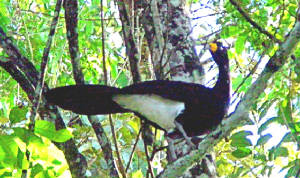
|
| A currasow, looks a lot like a tropical turkey |
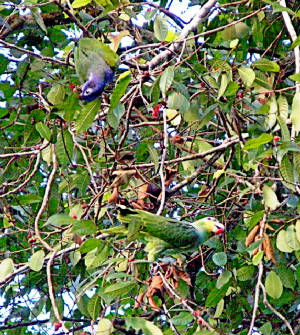
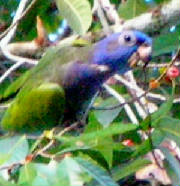
|
| Blue-headed parrot |
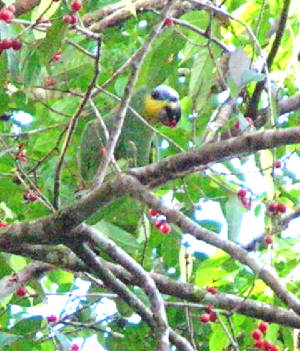
|
| orange-winged parrot |
Aracaris (right) are medium-sized toucans that are frugivores (eat fruits). The black-necked travel
in noisy groups. Their flight is many rapid wing beats followed by short glides. They roost communally in large trees
holes. Parents may have group members help them with feeding of their young in their tree-hole nests. (Steve Hilty,
Birds of Venezuela, 2003)
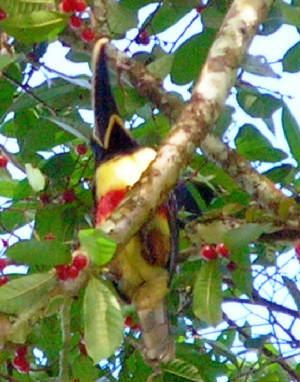
|
| Black-necked Aracari |
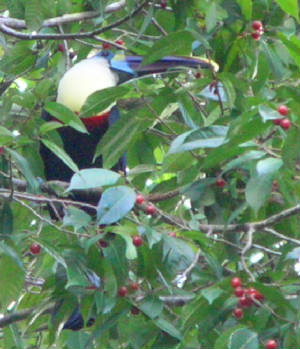
|
| white-throated toucan |
Not only birds came to join the feast, but also foraging monkeys.
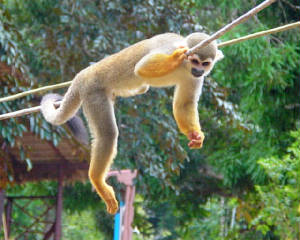
|
| Squirrel monkey resting after gorging on berries |
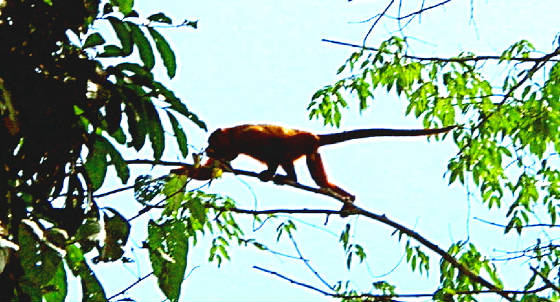
|
| Howler monkey leaving the feast |
Next the predators arrived. We watched this snake climb many nearby trees trying to find one that
would allow it to get into the greenheart without going to the ground. We had first noticed it moving through
trees the day before. It is more than 5 feet long. It finally resorted to going across an open
space. When we got too close, it inflated his throat to make himself look bigger. We believe that it
is a tropical rat snake, Spilotes pullatus. They feed mainly on mammals and birds. Rat snakes are diurnal
and semi-arboreal. This one seemed very arboreal.
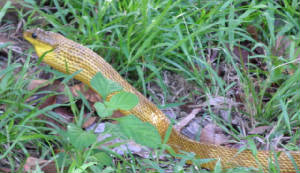
|
| Puffed up when threatened to look bigger |
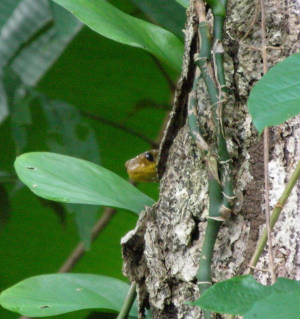
|
| Snake checking out the action |
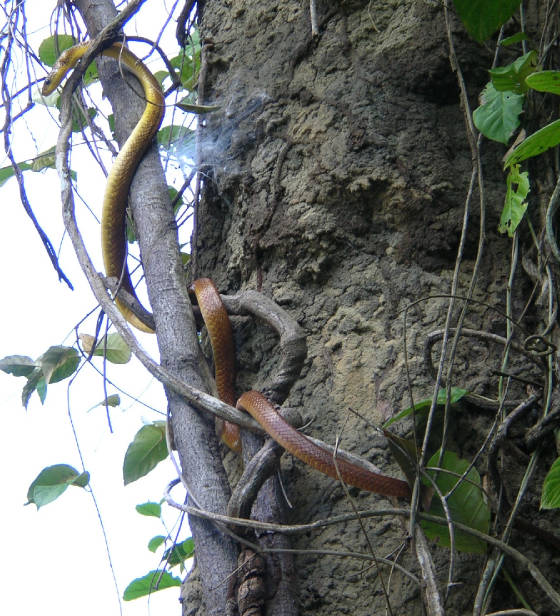
|
| Climbing the greenheart |
Great black-hawks are common along rivers in the rainforest. They will eat fish, frogs, lizards
and rodents.
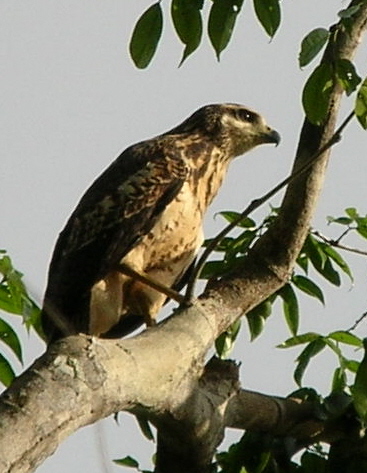
|
| Immature great black-hawk |
This immature hawk came to check out all the commotion. It was not hunting. It has
been around for a week whistling loudly to his parents to come feed him. They brought an iguana when
it was on the rocks near the river. He acts very helpless, a big baby standing in open areas calling and calling.
*
*
In the middle of the Central Suriname Nature Reserve, Amazonia, South America
|

